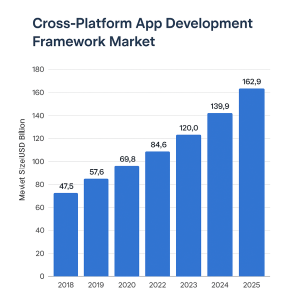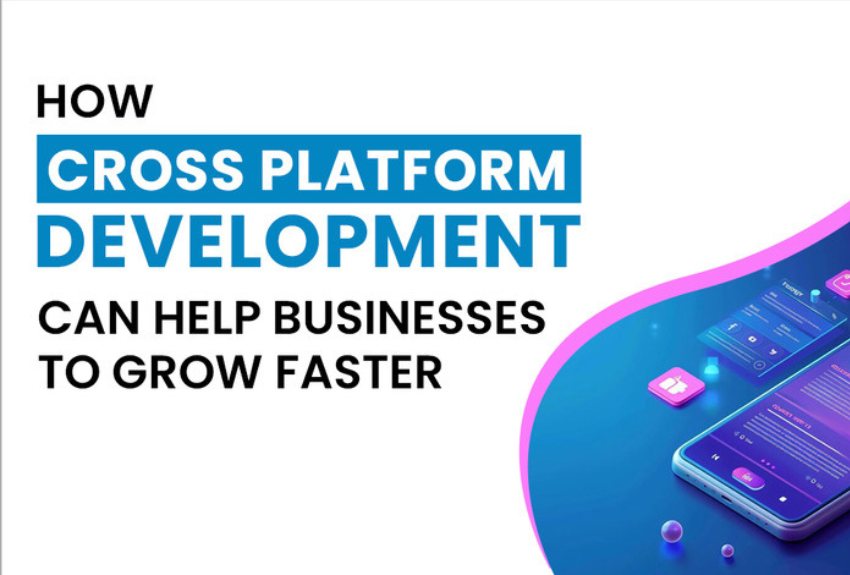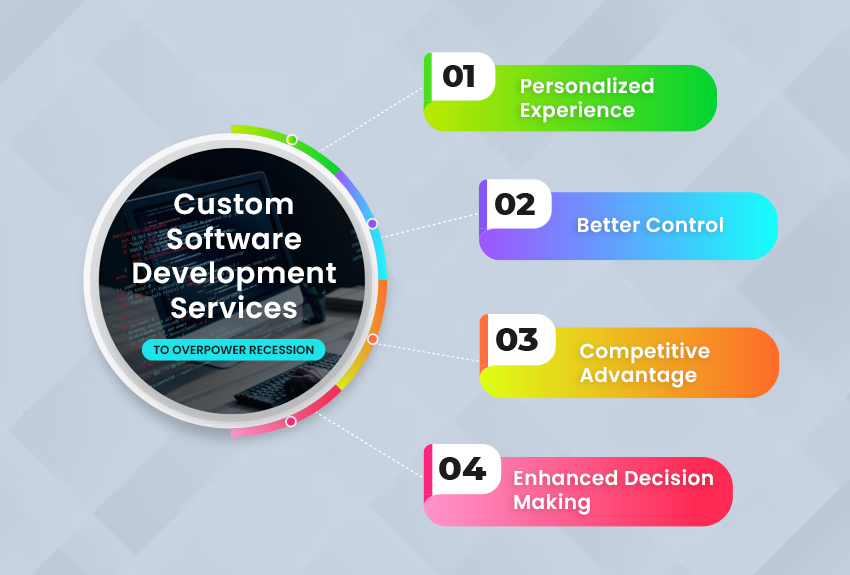In today’s fast-evolving digital economy, companies are under relentless pressure to innovate faster, scale wider, and manage costs more efficiently. As we step further into 2025, one strategy is emerging as a clear leader: cross-platform app development.
Cross-platform development — building a single codebase that runs across multiple operating systems like iOS, Android, and the web — has evolved from an alternative option to a strategic necessity for companies seeking speed, scalability, and cost-efficiency.
Why Cross-Platform Development Is Booming in 2025
According to Statista’s Mobile App Industry Report 2025, Over 42% of businesses are now opting for cross-platform frameworks like Flutter, React Native, and Ionic. This is up from 31% just three years ago — a shift driven by the need for faster market entry and broader device reach without doubling development budgets.
Gartner also predicts that by the end of 2025, over 60% of enterprise mobile apps will be built using cross-platform technologies (Gartner Mobile App Forecast). Businesses no longer want to maintain costly, fragmented native apps when a single, agile codebase can serve all major platforms.

1. Speed: Faster Development and Launch Cycles
Cross-platform apps dramatically cut down development timelines by allowing developers to build once and deploy everywhere.
Compared to maintaining separate native apps, companies report 30-40% faster launch times.
Consider BMW‘s success story: Their My BMW App runs on both Android and iOS with a unified React Native codebase. By choosing a cross-platform approach, BMW accelerated feature releases and unified customer experiences across different operating systems. (Source: BMW Group News)
In 2025’s hyper-competitive landscape, speed to market isn’t just a luxury — it’s a critical advantage.
2. Scalability: Growing Without Growing Overhead
Scalability is another reason cross-platform apps are dominating today’s development landscape. A unified codebase enables companies to:
- Add features faster
- Manage device-specific updates effortlessly
- Scale into new platforms and devices with minimal friction
Alibaba, one of the world’s largest e-commerce platforms, adopted a cross-platform model to scale to over 1 billion users. Using a combination of Flutter and their native frameworks, they maintained performance across mobile, desktop, and hybrid devices without building unique apps for each platform. (Source: Flutter.dev Alibaba Case Study)
Scaling without multiplying resource needs is a winning formula in any economy — especially in 2025’s lean, efficiency-focused world.
3. Cost-Efficiency: Doing More with Less
One of the biggest drivers of cross-platform adoption is cost savings.
According to the Business of Apps Development Cost Report 2024, the average cost to develop a single native app (either iOS or Android) ranges between $50,000 and $300,000. Creating two native apps separately can increase costs by 30-50%.
Cross-platform development, on the other hand, enables businesses to save up to 40-50% on total project expenses — without sacrificing quality or performance.
Additionally, companies save on ongoing costs for:
- QA Testing
- Maintenance and bug fixes
- DevOps and CI/CD pipelines
This makes cross-platform apps particularly attractive for startups, mid-sized businesses, and enterprises looking to optimize their tech budgets without compromising functionality.
Frameworks Leading the Charge in 2025
Thanks to continued innovation, today’s cross-platform frameworks deliver native-like performance:
- Flutter 4.0: Expanded support for web, desktop, and mobile with cutting-edge UI capabilities (Source: Flutter Release Notes)
- React Native: Preferred for complex, high-traffic apps like Instagram and Facebook Ads Manager (Source: Meta React Native)
- Ionic 7: Great for building hybrid apps with powerful front-end design tools
These frameworks have matured significantly, resolving performance issues that once plagued early cross-platform apps.
Considerations Before Choosing Cross-Platform
While cross-platform is ideal for most applications, it’s important to evaluate:
- Complex Hardware Features: Native apps still have an edge in utilizing device-specific features like advanced cameras or biometrics.
- High-Performance Needs: Apps requiring intense 3D rendering or very high frame rates (like gaming apps) may still benefit from native development.
- UI/UX Precision: Extreme platform-specific designs might require additional development customization.
Final Thoughts
In 2025, businesses aren’t just asking whether cross-platform development is good enough.
They’re realizing that it’s often better: faster, smarter, more scalable, and far more cost-effective.
Companies like BMW and Alibaba are proving that modern cross-platform frameworks can meet — and often exceed — customer expectations across devices. Meanwhile, startups and mid-sized businesses are using the same strategies to compete with larger enterprises, innovating faster and reaching wider audiences.
In a world where speed, scalability, and smart spending define success, cross-platform app development is no longer the future — it’s the present.
And it’s here to stay.




